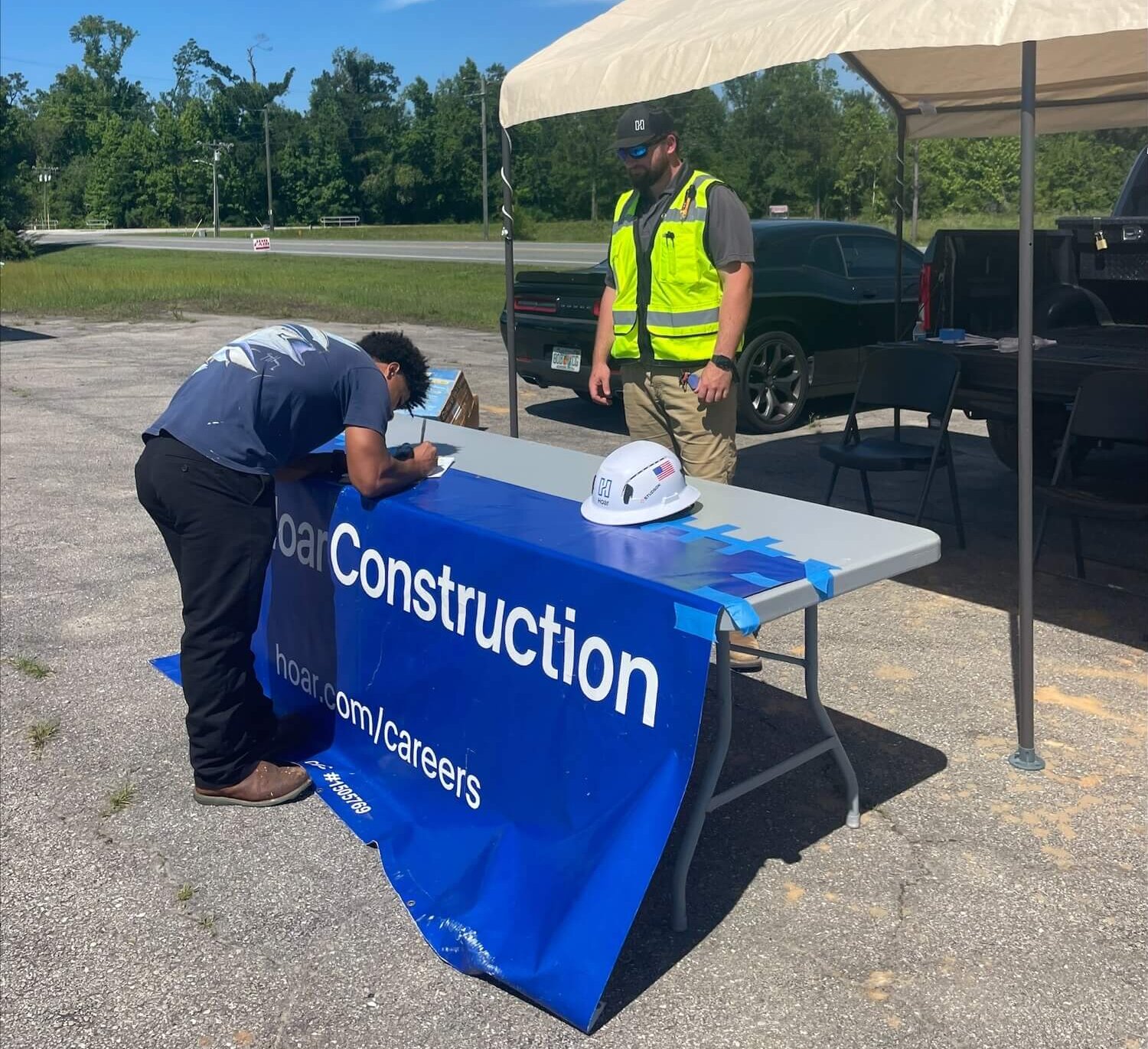
By Andrew Storer, Assistant Superintendent
One of the reasons I love building in healthcare is that every project is deeply personal to our client and the entire community. In my experience, this is especially true for rural healthcare projects, where the hospital we work on or build will touch everyone’s lives in the community — whether they work at the hospital or need treatment for themselves or a loved one. That’s one major reason that for most of our clients on these types of projects, it’s very important to them to hire locally as much as possible.
For example, we’re building the new replacement hospital for Calhoun Liberty Hospital in Blountstown, Florida, which sits about an hour west of Tallahassee and an hour east of Panama City. In any rural town, new jobs are a big deal. This project has the potential to bring a lot of new construction jobs, so naturally, our clients (who all live locally) want their neighbors to have a fair shot at getting hired. The personal interest from prospective hires was also there. Almost as soon as we had a job office set up, people were stopping in asking if we were hiring.
The Value of Hiring Locally
Local participation is a hot topic in healthcare construction, and something we’re asked about frequently by clients. For federally funded projects, it’s even required. But hiring local labor for rural healthcare projects is beneficial to everyone involved, and it’s important to partner with a builder who not only understands that but knows how to get full team participation to maximize the local hiring efforts.
First, let’s look at the value. It’s the right thing to do and important, but hiring locally has actual proven added value to projects. Looking just at Hoar’s own interests, all of our full-time carpenters are based out of Orlando and Tampa. If we send them five hours away, we have to pay for housing, travel, and other living expenses — expenses that are factored into our overall budget. The same is true for all our trade partners. Every single person you have to travel to the job is an extra expense that makes the overall project more expensive. But, if you need a team of 20 people and you can hire 5 of those positions locally, you’re reducing those expenses and creating value in the budget.
Now, I’d like to share some best practices I’ve learned and seen within our own company to recruit locally while ensuring the manpower is experienced enough to maintain schedule and quality.
Job Fairs Done Right
As I mentioned before, hiring locally is important to rural healthcare clients, and many require their general contractors to hold Job Fairs or Trade Partner Solicitation events. But there’s an easy way, and there’s a right way to hold a hiring event for rural construction projects. It makes sense that you would hold the job fair before construction begins, but if most of your key trade partners are coming from out of town, only a few would even be on site that early in construction to participate. Roofers for example, won’t be required on site for months into a construction schedule. That’s why it’s important to reach out to every trade partner who will ever work on the job and find out which positions on their teams could be hired locally. Make sure that they are represented at the event, even if it’s only with a sign-up sheet and list of potential positions, so you can gather potential candidates for a later date.
That’s what we did when we held a career fair for the Calhoun Liberty Replacement Hospital project. I reached out to every trade partner and made sure they were represented. For those trade partners who couldn’t make it in person, I collected names and resumes and shared them with the entire team. Every single trade partner in attendance hired at least one candidate locally, including Hoar. We had about 50 people show up to the event, and approximately 20% were hired onto the project.
Qualify or Train
While we do see all levels of experienced candidates at these kinds of events, we most often meet capable, interested individuals who may need training or mentorship to fill the roles available. That brings me to an important point. Our goal is to hire locally, but not at the risk of the project’ success. It’s vital that your general contractor be able to thoroughly vet and qualify all local trade partners and potential hires. We have our own extensive prequalification process for this very reason. But, for those individuals who have the right attitude, availability, and potential — we have proven training and mentorship processes that allow us to bring on and train up local talent if necessary. Many of our trade partners have similar processes and apprenticeship programs. It’s a win-win all around. We can hire locally while also bringing much-needed new talent into the industry, which continues to suffer from declining labor numbers.
Sometimes the reason behind what we do is as simple as, “It’s the right thing to do.” But often, there are additional benefits behind doing what is right. That’s very true of hiring locally for rural healthcare projects. It just makes sense to give community members ownership of their hospital and the opportunity to hire on to a project bringing so many jobs to their hometown. The added benefit is the value it creates in the budget, savings passed onto the project and final building itself. It’s an easy decision to hire locally, but it does require an understanding of the local labor market, the required talent for the planned work, and a thorough qualification and/or training process to make sure the overall success of the project isn’t put at risk.

